
For once, I don't think a 'pimping' piece of mine needs any lengthy introduction to the device itself. The Nokia 808 PureView has been featured more on All About Symbian than any other previous device and its benefits are well known. I'd highlight, in particular:
- the 41MP oversampling PureView camera (obviously) with bright Xenon flash
- the terrifically high contrast ClearBlack Display AMOLED screen, still topping the GSMArena test table
- the very loud, high quality mono loudspeaker
- the replaceable battery - swap it in seconds
- the 'Play via Radio' FM transmitter
- the microSD support
- the narrow form factor (unusual in these days when flagships come with 5" and 6" screens and width to match)
Against these selling points, unique when taken as an ensemble, are the obvious cons of an operating system which is gradually being abandoned by Nokia, an ecosystem which is about to be officially 'frozen' and something of a widening application and service compatibility 'gap' with the rest of the world.
Hopefully this 'pimping' guide can help address some of these issues, at least.
Central to a lot of what follows is discovering as much independence as possible. With Nokia effectively washing its hands of the Symbian handsets (apart from contractual 'normob' support calls/emails and repairs if you're very lucky), getting a Nokia 808 up to par in late 2013 is very much a DIY job. But the effort is worth it and your 808 can see a whole new lease of life.
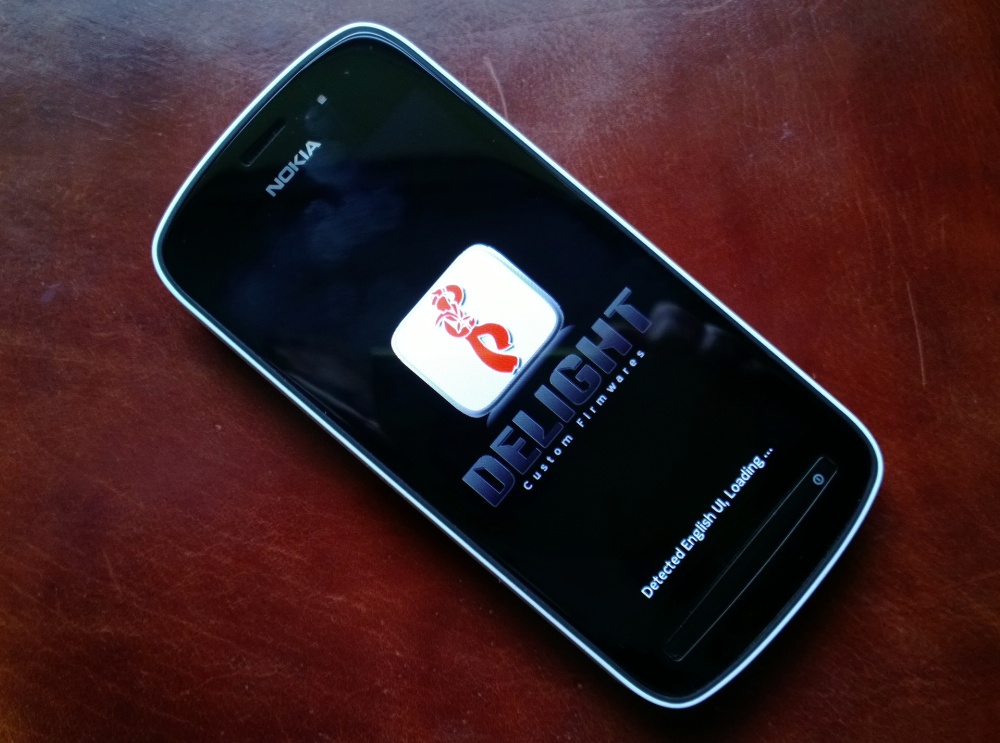
Custom firmware
Core to this 'pimping' is the use of custom firmware. The best known is Delight 1.2 and it's what I'm using here. It's easy to get scared off from trying to flash (refurbishing) a Symbian phone, but once you've got the right version of Phoenix installed and all relevant USB drivers already in place, it turns out to be a piece of cake. Going from stock firmware to custom firmware does mean wiping the system (C:) disk and thus you'll have to reinstall all your apps and data, but subsequent updates to the Delight firmware can be overlaid, keeping everything intact, happily.
The core reasons for going with custom firmware here are:
- More disk space, more RAM (thanks to removal of Nokia cruft). After flashing, my Nokia 808 showed 599MB free on the system disk and free RAM after booting was 301MB.
- Independence from Nokia's update timeline. You're now on the Delight team's update timeline, and they're still thinking up ideas, unlike Nokia's (Accenture) Symbian teams, which are almost gone now.
- Independence from the Nokia Store signing process. In addition to Store items, you can also now install 'unsigned' utilities from all corners of the globe. Of course, you do have to be careful what you install, but for the careful geek this isn't an issue.
- Extra functions and options, from the use of Nokia Pure font to being able to turn theme transitions off to more widgets, to more EQ options to even louder output from the main speaker, to flexibility in the main app menu (sub-folders!), to faster Music player, to more homescreens, to a hundred other tweaks that can be played with.
See my main story on Delight 6.2 for the full benefits list.
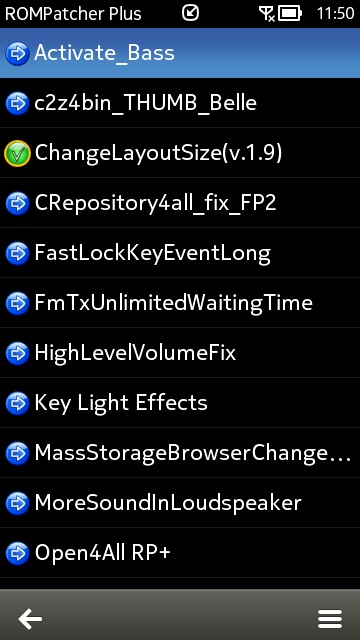
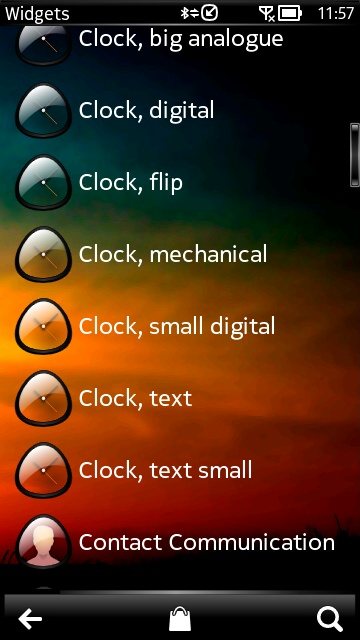
Two glimpses inside the options available with custom firmware - every tweak, every widget imaginable, all available, here in Delight.
Internet basics
Of course, however much cruft is taken out in custom firmware, however many extra options and widgets, however many graphical tweaks, you're still ultimately limited by the core Symbian applications. Web has famously struggled with modern desktop-aimed web sites, many modern pages have a Megabyte of images and Javascript and Web was designed for a slightly simpler age.
Having said that, Web still works very well for 'mobile' sites (see Google+ below, for example), I tend to keep my own mini-directory (in need of an update, actually) as the home page, but of course you can construct your own... Opera Mobile, while twice as fast as Web for many modern sites (with faster javascript handling, for example), is still ultimately constrained by the relatively limited processor (even in the Nokia 808) and lack of investment in the Symbian code by Opera Software. But it's worth keeping around to at least have a stab at any desktop-designed web layouts you need to access. Web will get lauched by default in Symbian and there seems no way to make a default of 'Opera Mobile' stick, sadly - one 'bug' which will never get fixed.
Email presents an issue or two, too. Almost everyone reading this will use Gmail, I suspect, and the old 2010 Java client is now very flaky on modern devices. While the old standby of using Symbian's one Mail for Exchange 'slot' for Google and Gmail no longer works for most of us because of Google's withdrawal of the protocol for mainstream use.
Leaving the use of IMAP4 for Gmail (i.e. pick 'Google' from the Symbian mail set-up wizard) - which itself has been running into performance issues. It's not clear whether the issue is at Google's end or some subtle interoperability problem between Gmail servers and Belle FP2, but I've had the 808 slowing to a crawl for several seconds at a time while Mail does an IMAP4 hook-up. My solution was to reduce the IMAP interaction as much as possible, by setting the Gmail mailbox to retrieve just the first '2kb' of each email and to only sync the latest '10' emails on each connection, which then happens every '15 minutes'. I'm sure you'll want to tweak these parameters for your own email load, but these work fine for me, with IMAP slowdowns only noticed very infrequently.
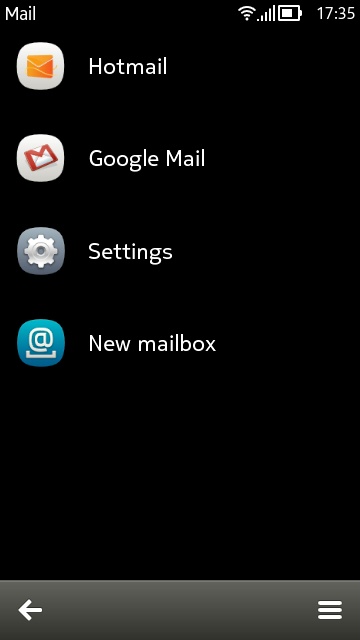
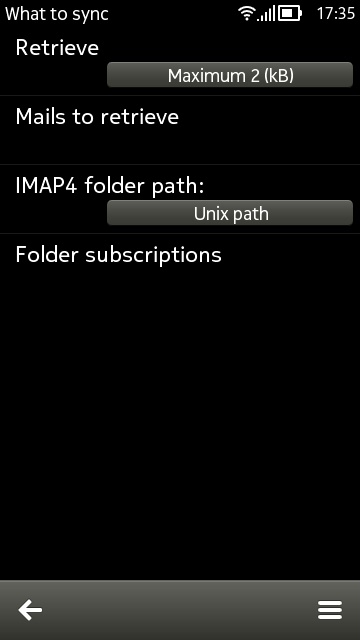
Of course, with Gmail taken care of with IMAP (by necessity), that leaves Symbian's one Exchange slot free for another system. Perhaps you have a corporate mailbox to keep track of? Or perhaps, like me, you're experimenting with Windows Phone and Microsoft's ecosystem - outlook.com is a pretty fair alternative to Gmail and offers not only email, but Contacts and Calendar sync through Exchange ActiveSync that's fully compatible with any Nokia Lumias and with the guarantee that the all importat Exchange protocol won't be withdrawn (as with Google) because Microsoft owns it(!)
I've ended up with the latter, so Contacts and Calendar syncing in from Microsoft's cloud every time Symbian Mail hooks up via Exchange to live.com/outlook.com, with settings:
- Pick 'Exchange ActiveSync' from the Mail wizard
- Username as your live.com/hotmail.com/outlook.com email address
- Use m.hotmail.com as the server name
- Domain, leave as 'None'
If you'd previously had all your PIM data in Google, it's a slight wrench to switch to Microsoft's servers, but the export from Gmail Contacts and the import into Outlook.com is foolproof, plus the latter has a really good 'duplicate' removal and sanity checking system. So you'll be and running in no time. [And, if you do decide to move to a Lumia 1020 in 2014, you'll already be set in terms of data sync.]
Social matters
One of the central tenets of a modern smartphone is, of course, keeping you connected with your online followers and friends. Symbian's native Nokia Social application is written partly in Qt and partly in Web runtime (I believe), with the result that it's slow and inflexible - and dumped unceremoniously from the Delight custom firmware. Which means that you need to source your own clients for the social networks you're interested in:
- Twitter - there are more Twitter clients for Symbian than you might think, but I'd suggest you start with the free Tweetian, shown below, left, which has improved a lot in the last 18 months, or the ubiquitous Gravity, for which you've probably already paid and you just need Jan Ole to add your IMEI to his database, etc. Either provide a Twitter experience which is easily up with the Twitter clients on other mobile platforms, and both are distributed through a model which doesn't rely on updates through the Nokia Store.
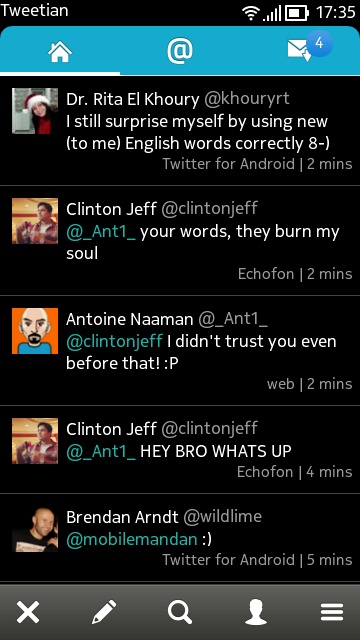
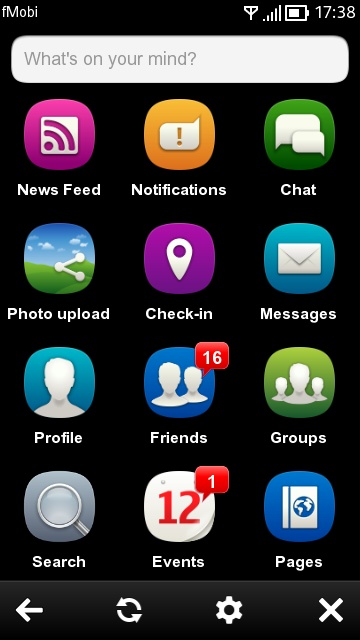
- Facebook - the mobile web experience for this is pretty awful, being designed for feature phones. Run, don't walk and head for fMobi, shown above, right, which by simple virtue of being regularly updated stands apart from previous contenders. I do worry about updates to this in 2014 though, and I'd hope that the developer is going to provide updates via a standalone server - a self signed SIS should be fine here. If you ever find that this client drops behind Facebook's cutting edge in terms of compatibility, note also that Pixelpipe's Facebook Browser is worth installing, as it fools Facebook into serving up whatever the latest version of its mobile site for the iPhone and iPod Touch is - and turns out to be surprisingly useable, as shown below:
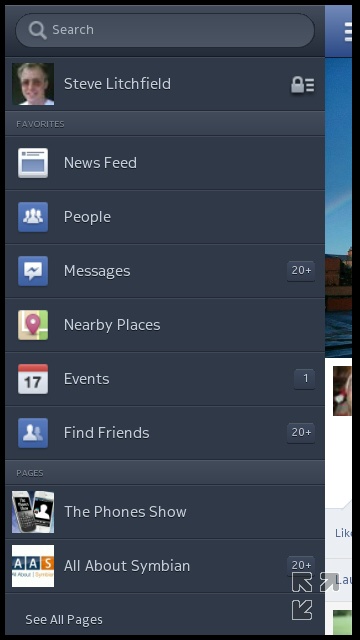
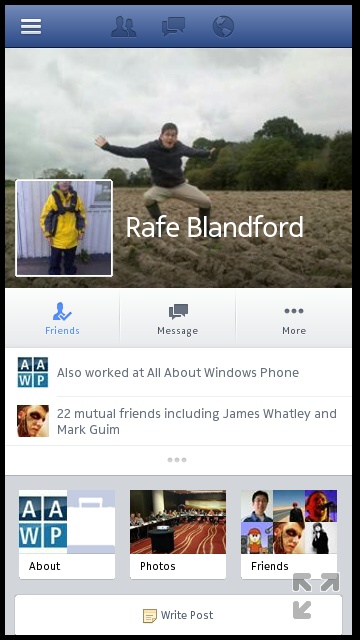
- Google+ - the problem here is that there aren't third party clients for this - for any mobile platform, since Google hasn't released a proper API yet. However, you can keep up with your G+ stream and interact by leaving comments, etc, by going to plus.google.com - for best effect, long press in any white space on the page and 'Install as application'. Hey presto, a Google+ 'client' in your app menu and on your homescreens. Well, sort of!
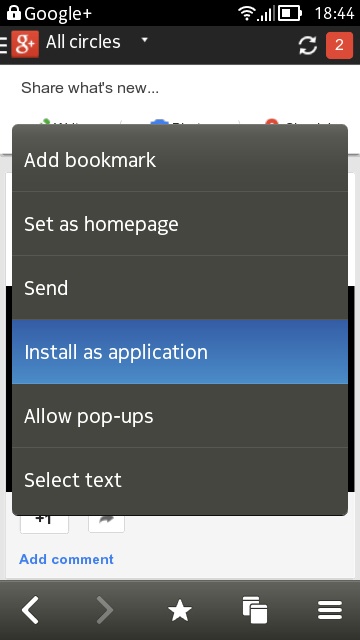
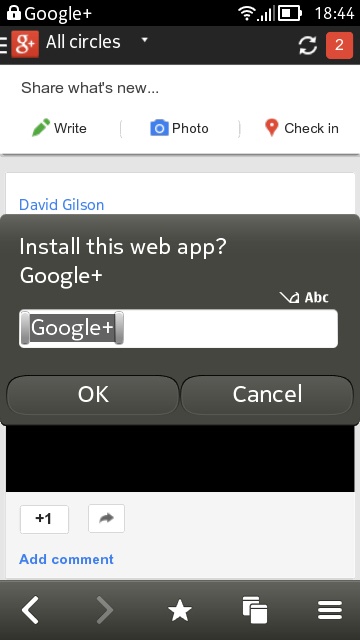
- Skype - Skype v2.1.0.23 dates from 2011 but still works well for VoIP and Skype chat, though there's no video calling (which is a shame). The app comes and goes in the Nokia Store, whcih is odd, but see here for a direct download.
- Whatsapp - Constantly updated (arguably to stay top of the 'new' column in the Store!), this is a very slick Whatsapp client that rivals what you can do on other platforms. Commendably, it's also available directly from the developers, so again no issues after January 1st 2014.
Input
It's no secret that I wasn't a fan of Belle FP2's qwerty keyboard, at least in portrait mode, where there's no auto-correction of words. Such a terrible step backwards in terms of real world usability. In desperation, I turned to Swype, implemented on Symbian in useable (though demonstrably not perfect) way, since it offered full text correction in portrait mode - by definition.
In fact, on the whole, Swype works really well on the narrow screen of the Nokia 808 - the input area is just the right size for a thumb to trace out letter combinations. There are just a couple of areas within Symbian's UI where the Swype pop-up keyboard proves inappropriate (because the applications concerned don't know about Swype and don't allow for it to appear. The quick reply facility in Messaging is one such. Personally, I find I can work around these areas and enjoy the speed of Swype the rest of the time - but your mileage may vary.
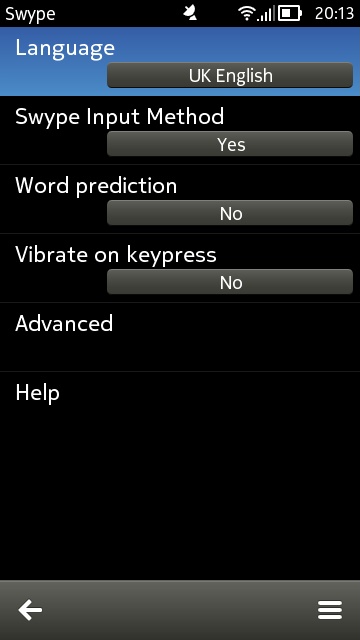
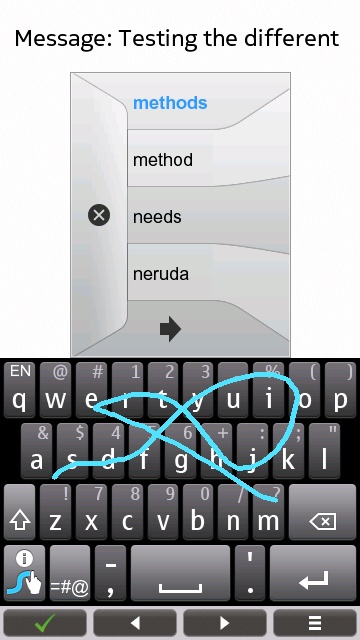
I've tried the stable version 1.0 in the Nokia Store and the beta version 2.1 from Beta Labs and, from a Swype newbie's point of view, there doesn't seem to be much difference. Anyway, I've linked to both here, so go try it for yourself. And if you come across an app or situation for which the Swype keyboard gets in the way, note that you can disable the system (and re-enable it) in the main Swype settings application.
Multimedia
The Nokia 808's multimedia prowess is well known, albeit that the screen resolution is looking a bit low-res these days, even for a 4" screen. Symbian's range of supported codecs is excellent, for sideloaded MP4 (and similar) files, but you're also going to want to branch out into YouTube and Vimeo, which is best addressed by buying CuteTube.
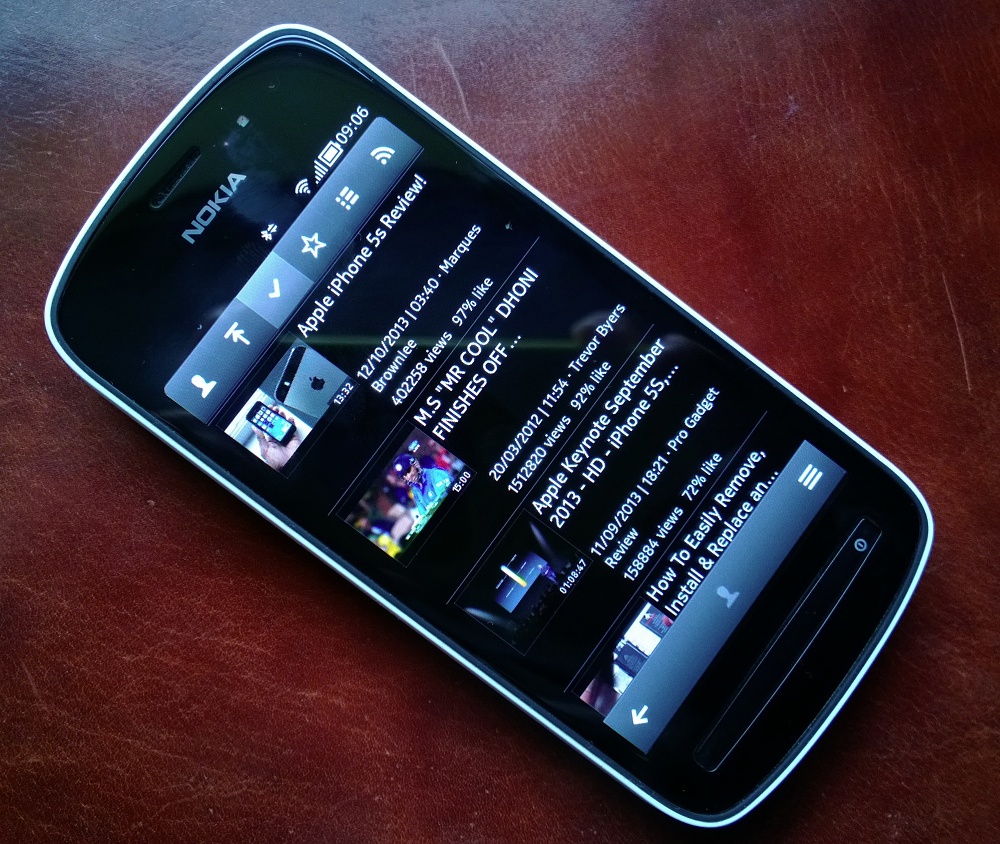
Also note a couple of things about the audio side of multimedia:
- The 'Play via Radio' system works well with the Video player. So, waiting in the car (e.g. for a partner or child), you can use your car's stereo to provide top notch audio for the video unfolding on your phone screen.
- Audio output over the 808's speaker is already loud and of quite high quality - but the 'MoreSoundInLoudSpeaker' patch that comes with Delight custom firmware doubles the volume again, with only minimal loss of quality at peak amplitude of whatever you're listening to. [NB. There's also a side effect if you don't enable this patch - headphone output ends up too loud, somewhat bizarrely! Still, at least you have the choice....]
No games?
All hackery and no play makes Jack a dull boy, etc.... One common criticism of Symbian is that it doesn't have enough games available for it. But every time I head over to my own Games directory I'm still struck by how much more there is than I'll ever have time to play through. We're not talking a massive, iOS-like catalogue here, but still plenty to amuse you in boring moments....
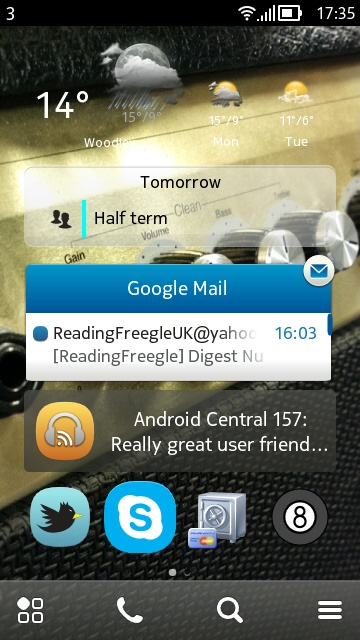
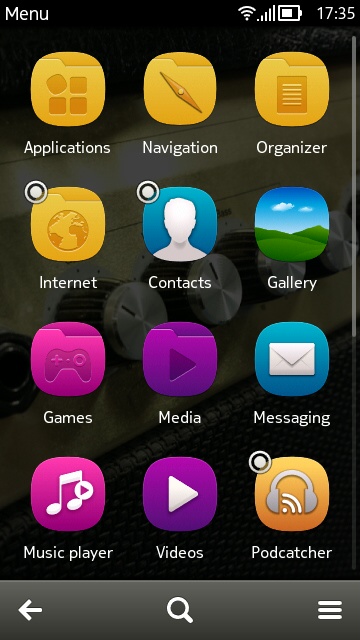
My main app homescreen and main menu...
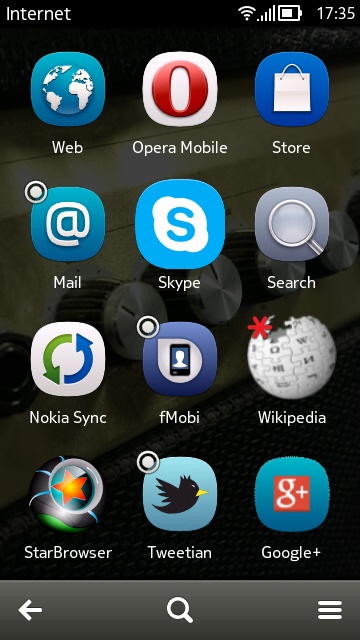
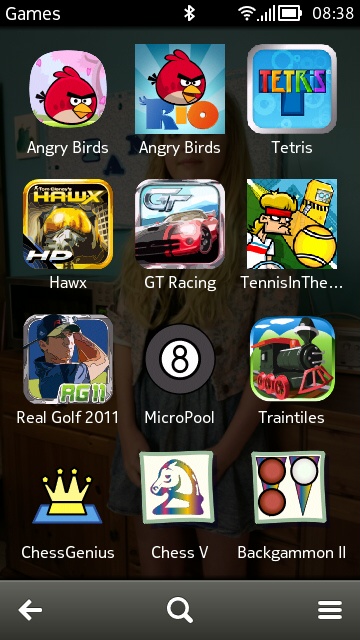
The all-important Internet folder with some likely candidates... and some relaxation titles for later!
2014 and beyond
With games not needing to be kept updated because of API changes, most can be left in the Nokia Store, despite its update freeze, of course. Though I'd yet again urge Symbian developers - of games or general apps - to seriously consider going freeware or donationware and thus being able to release their SIS file independently of the Nokia Store. Just in case.
The Nokia 808 PureView continues to be a phone that ticks more boxes for many people (including me) than most of the competition. Armed with custom, install-server-hacked firmware and applications, utilities and games installed where necessary from side-loaded SIS files, there's no reason why the 808 can't continue to work its magic for some time to come - whatever Nokia do or don't do from a support standpoint. And I've already recommended that 808 fans consider getting a spare, since the 808 is getting harder and harder to find now.
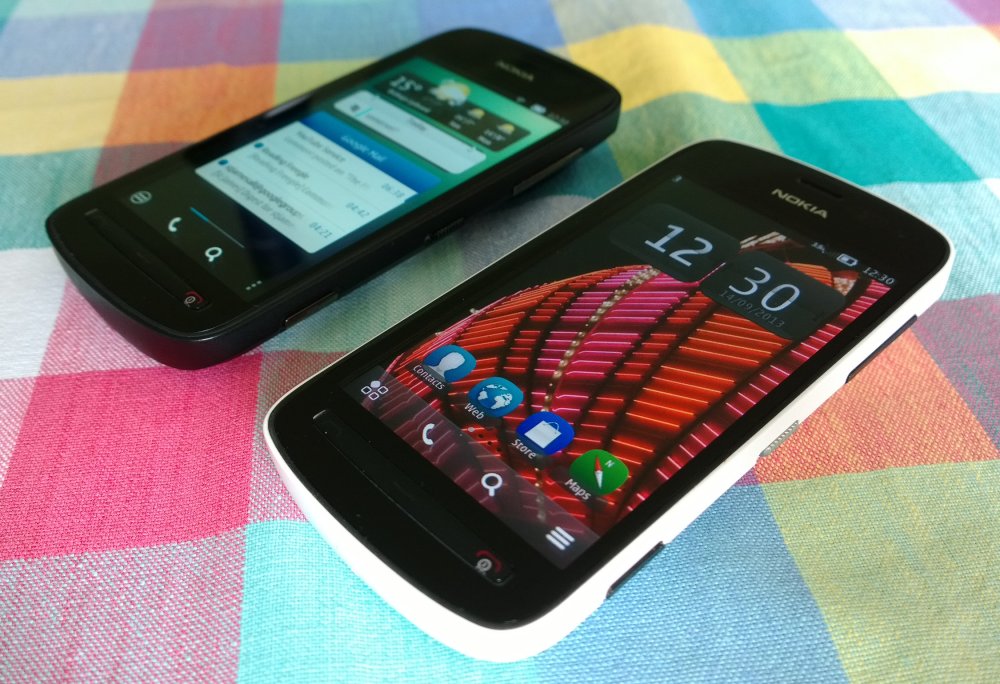
No hay comentarios:
Publicar un comentario